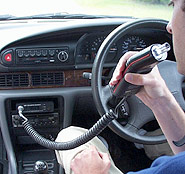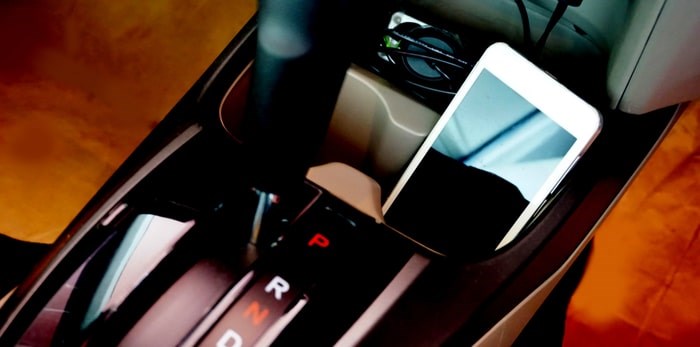
In State v. Peppin, the WA Court of Appeals ruled law enforcement’s warrantless use of enhanced peer to peer file sharing software to remotely access shared files on an individual’s computer does not violate either the Fourth Amendment of the United States Constitution or article I, sec. 7 of the Washington Constitution.
In other words, an individual does not have a constitutionally protected privacy right in image files he shares with the public.
Here, defendant Casey Peppin was found guilty of three counts of Possession of Depictions of Minors Engaged in Sexually Explicit Conduct in the First Degree under RCW 9.68A.670. On December 29,2011, Spokane Detective Brian Cestnik conducted an online investigation of the Gnutella network to identify persons possessing and sharing child pornography. Using peer to peer software called “Round Up” version 1.5.3, Detective Cestnik found child pornography on Mr. Peppin’s computer in a shared folder. He obtained a warrant, searched he defendant’s home and recovered the computer(s) allegedly used to view and share images of minors engaged in sexual conduct.
BACKGROUND ON “PEER TO PEER FILE SHARING”
For those who don’t know, “peer to peer file sharing” is a method of Internet communication that allows users to share digital files. User computers link together to form a network; the network allows direct transfer of shared files from one user to another. Peer to peer software applications allow users to set up and share files on the network with others using compatible peer to peer software. For instance, LimeWire and Shareaza are software applications that allow users to share files over the Gnutella network.
To gain access to shared files, a user must first download peer to peer software, which can be found on the Internet. Then, the user opens the peer to peer software on his or her computer and conducts a keyword search for files that are currently being shared on the network. The results are displayed and the user selects a file for download.
The downloaded file is transferred through a direct connection between the computer wishing to share the file and the user’s computer requesting the file. The Gnutella network gives users the ability to see a list of all files that are available for sharing on a particular computer.
F or example, a person interested in obtaining child pornographic images opens the peer to peer software application on his or her computer and conducts a file search using keyword terms such as “preteen sex.” The search is sent out over the network of computers to those using compatible peer to peer software. The results of the search are returned and displayed on the user’s computer. The user selects the file he or she wishes to download. The file is then downloaded directly from the host computer onto the user’s computer. The downloaded file is stored on the user’s computer until moved or deleted.
A peer to peer file transfer is assisted by reference to an Internet Protocol (IP) address. In general, the numeric IP address is unique to a particular computer during an online Internet session. The IP address provides a location, making it possible for data to be transferred between computers.
This is where the police work comes in: investigators can search public records on the Internet to determine which Internet provider is assigned the IP address. Investigators can contact the Internet provider and gain information about the user based on the IP address assigned to the computer.
THE INVESTIGATIONS
Here, Detective Cestnik searched the Gnutella network for “pthc,” the commonly used term for preteen hard core Internet pornography. Clerk’s Papers (CP) at 17. The results indicated that images matching the search terms could be found on a host computer with an IP address linked to Spokane. Detective Cestnik’s check of the IP address through two different Internet search engines confirmed that the IP address was in Spokane and that Qwest Communications was the provider.
Next, Detective Cestnik presented Qwest Communications with a search warrant requesting information on the IP address for the host computer. Qwest Communications advised Detective Cestnik that the IP address was connected to Mr. Peppin and provided Mr. Peppin’s address.
Detective Cestnik then obtained a search warrant for Mr. Peppin’s computer. A complete forensic investigation uncovered over 100 videos of what appeared to be minors engaged in sexually explicit conduct.
TRIAL OUTCOME
Mr. Peppin moved to suppress the computer files downloaded by Detective Cestnik during his Internet search. He maintained that law enforcement’s access and download of his computer files via the Internet was an intrusion into his private affairs and an unlawful warrantless search. The court denied Peppin’s motions to suppress. At trial, he was found guilty on all 3 counts.
COURT OF APPEALS DECISION
The legal issue addressed by the court was whether Mr. Peppin had a constitutionally protected privacy right in the image files he shared with the public. In short, the Court said, “No.”
First, federal circuit courts have consistently held that a person who installs and uses file sharing software does not have a reasonable expectation ofprivacy in the files to be shared on his or her computer.
Second, even the broader protection of the Washington State Constitution also does not offer any relief to Mr. Peppin. It stated, “What is voluntarily exposed to the general public and observable without the use of enhancement devices from an unprotected area is not considered part of a person’s private affairs.” The court emphasized that here, Mr. Peppin voluntarily offered public access to the computer files obtained by Detective Cestnik. Mr. Peppin used peer to peer software to make these shared files available without restriction. Anyone wanting to view or download the files could do so. Law enforcement’s access of these files was not an intrusion into Mr. Peppin’s private affairs.
The court summed it up:
Additionally, this is not the type of information that a citizen of this state is entitled to hold as private. The inherent nature of peer to peer software is the public sharing of digital computer files. Individuals using file sharing software cannot expect a privacy interest in files they hold open to the public. Again, Mr. Peppin’s use of peer to peer file sharing voluntarily opened this information to the public for anyone to access, including law enforcement. There is no disturbance of a person’s private affairs when law enforcement accesses shared computer files that the person holds publically available for viewing and download. Thus, there is no violation within the context of article I, section 7 of the Washington Constitution.
My opinion? Although I understand the logic – as well as the government’s desire to criminalize the sexual exploitation of minors – at what point does “private” communications end and “public” communications begin? How intrusive is the government’s technology? How often do they use the internet to spy on citizens for public safety reasons? I suppose we’ll see . . .
Please contact my office if you, a friend or family member are charged with a crime. Hiring an effective and competent defense attorney is the first and best step toward justice.











